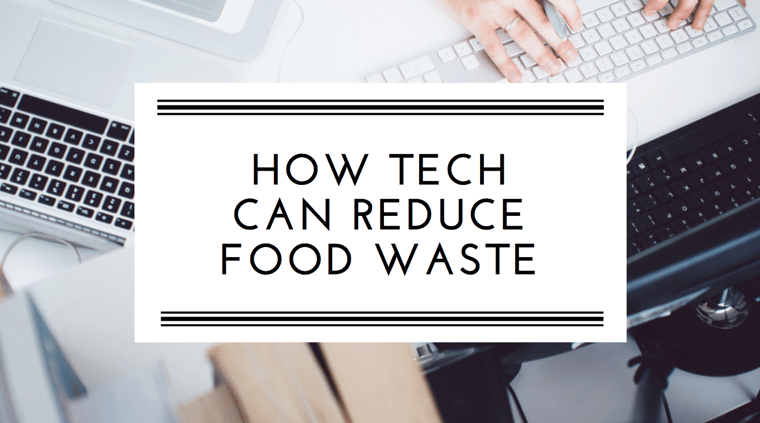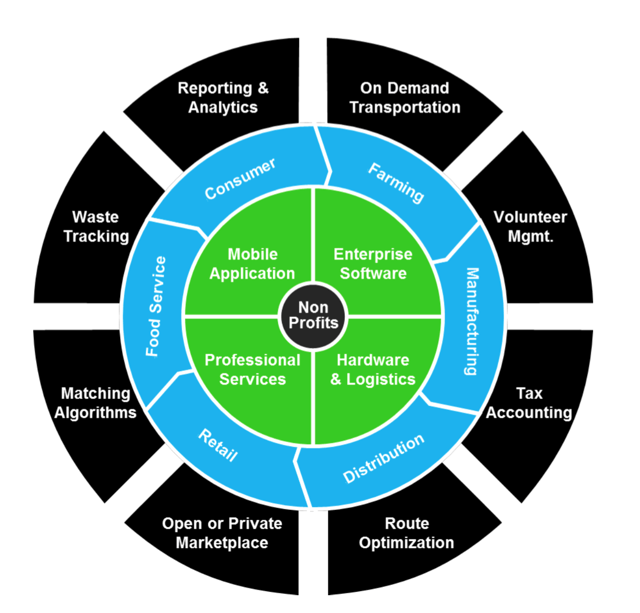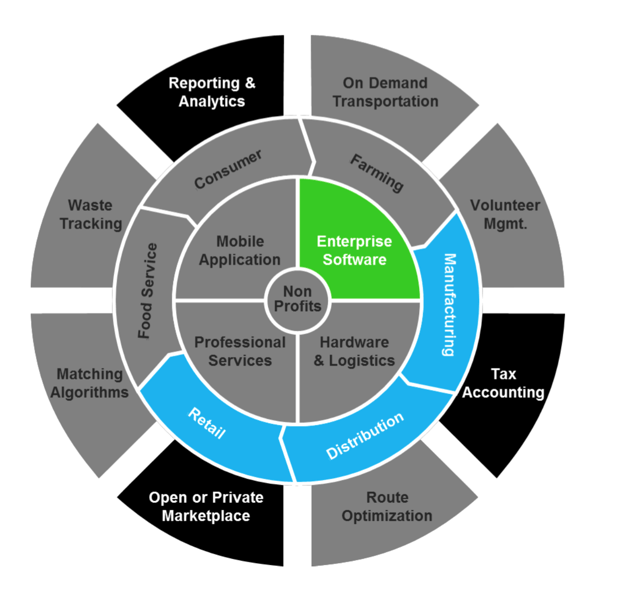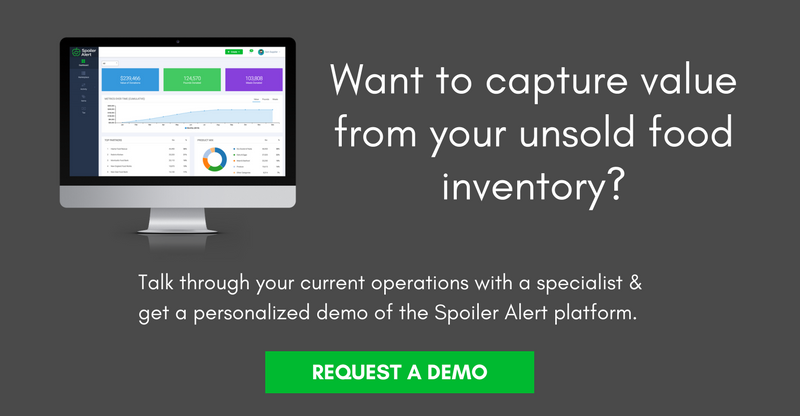
When it comes to food recovery and food waste reduction, there are a growing number of technology-driven solutions available to food businesses and nonprofits, each with important differences in business models, industry focus, and product offerings.
It goes without saying that there is too much food going to waste, and it’s great to see so many players working towards the mission of getting more food to those in need. From the farm-level to the consumer-level, a suite of solutions have been created in the form of mobile apps, hardware, professional services, and in our case, software.
Here’s our view of the current tech landscape working to help organizations minimize their food waste. Before diving in, organizations should recognize that not every one of these solutions is ideal for their particular operations or circumstances.
Tech Solutions to Food Recovery
We developed the framework below to highlight some of the technology offerings that businesses have available to them. Some of these solutions operate as for-profit models, others as nonprofits.
These materialize through:
- different business models (what you see in the green)
- different industry verticals (what you see in blue)
- different features and offerings (what you see in black)

Key: Green (Business Models), Blue (Industry Verticals), Black (Features & Offerings)
What is consistent across all platforms is that hunger relief organizations and nonprofits are at the heart of this system; they are the engine making this work possible and those responsible for delivering meals to America’s 40+ million food insecure individuals. What’s clear to us is that technology can be a tool to empower these organizations to achieve their goals.
Spoiler Alert's Model
One of our biggest learnings early on in launching Spoiler Alert is that waste isn’t always predictable. Variability in donation volumes and volatility in unsold inventory are two forces that are problematic for food businesses. Often times, these organizations end up throwing away food because their existing processes and partners cannot respond in real-time to these fluctuations.
For example, one of the first transactions we were involved in was connecting a wholesale distributor with 800 pounds of over ripened bananas with a nearby baker who purchased them at a discounted price and turned them into hundreds of loaves of banana bread.
In a separate situation, 4,700 pounds of strawberries froze in a delivery truck and were subsequently rejected by the grocery retailer who had order them. Within minutes, the strawberries were claimed from our platform by a food rescue organization.
Our vision to help recover large quantities of often wasted food has inspired Spoiler Alert — an enterprise software solution optimized for bulk inventory across the manufacturing, distribution and retail verticals, which launched late last year.
Our technology is not a mobile application, nor do we hold inventory, manage individual volunteers, or provide transportation services ourselves. Rather, we are a software solution that provides detailed reporting, analytics, and tax accounting capabilities for the food manufacturers, distributors, and retailers. This advanced software complements our online marketplace, which is the base of our product offering. We can support communication and documentation with existing partners through private, closed networks, or we can facilitate new relationships through transparent collaboration.

Key: Green (Business Models), Blue (Industry Verticals), Black (Features & Offerings)
Ultimately, we want sustainability, operations, and finance professionals in the food industry to feel control over their food waste reduction efforts through greater tracking and accountability, real-time responsiveness, and automated capture of critical information for claiming enhanced tax deductions.
What solution is right for your organization?
.png?width=250&name=SpoilerAlert_WhiteLogo_LeftStacked%20(7).png)

